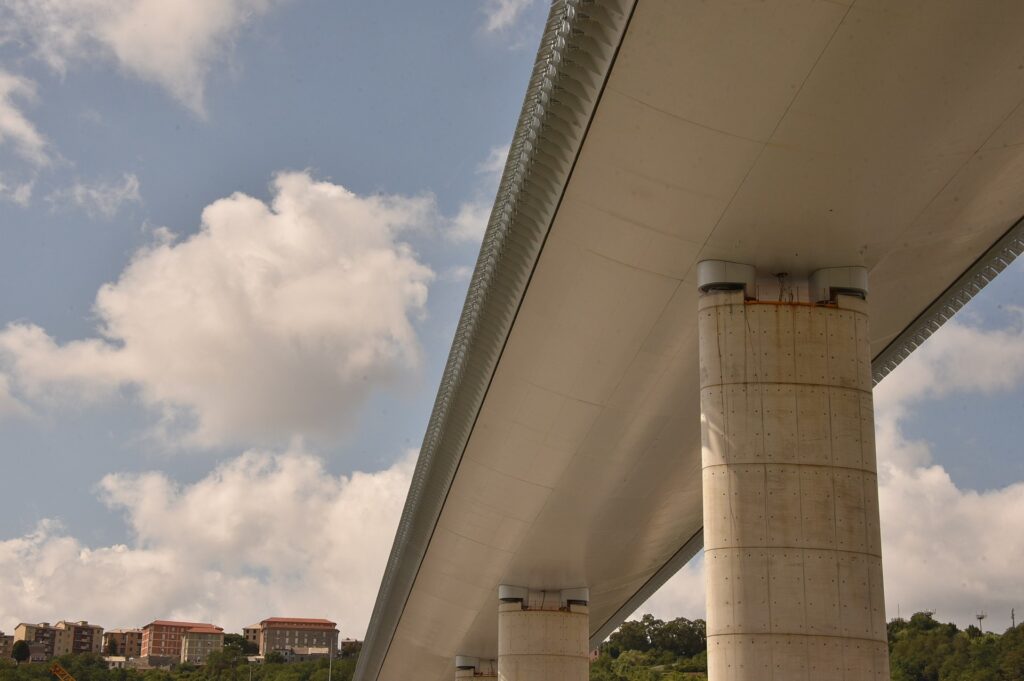Background
The Morandi Bridge, designed by engineer Riccardo Morandi, was built between 1963 and 1967 by the Italian Water Pipeline Company.
The viaduct, with its interchanges, constituted the final section of the Italian A10 highway (operated by the concessionaire Atlantia), which itself is included in the European road E80.
At 1,182 meters long, the Morandi bridge had a height at road level of 45 meters and crossed the Polcevera stream between the Sampierdarena and Cornigliano neighborhoods, also passing over the railway network.
Being part of the route of the A10 highway, it constituted a strategic infrastructure for the road connection between northern Italy and southern France in addition to having been the main road axis between the center-levant of Genoa, the container port of Voltri-Pra’, the Cristoforo Colombo airport and the industrial areas of the Genoa area.
The bridge collapse that occurred on August 14, 2018 has tragically claimed 43 lives, 11 injured and 566 people displaced.
Ovviamente, ha anche causato pesanti disagi alla viabilità, costringendo gli automobilisti ad intraprendere percorsi alternativi allungando notevolmente i tempi di percorrenza poiché il viadotto intersecava molte delle direttrici autostradali della Liguria.
Obviously, it also caused heavy disruption to the road system, forcing drivers to take alternative routes, considerably increasing travel times as the viaduct intersected many of Liguria’s highway routes.
The Group’s Work
In 2020, the Migliaccio Group worked on the slab for the new San Giorgio Bridge in Genoa. The work took place in intermittent days with a split pour and a 48-hour break due to bad weather. For this work, a mix made by Calcestruzzi SpA was used, which also supplied the product for the bridge piers; The total volume of concrete pumped was 8,000m3.
The pour was remarkably challenging: 300m3 for a total use of 32-34 mixer trucks on site.
Since this was a surface with little thickness and a length of about 30m, it was particularly delicate and it was essential to prevent cracking during curing.
In addition, to pump safely and efficiently, a system has been designed that allows the pumps to move up on the deck when the concrete has already set meaning concrete has been pumped from the abutments with piping up to 200m to allow the pumps to move up on an already cured slab.
The work was mostly done at night for thermal reasons thus ensuring slower drying.


